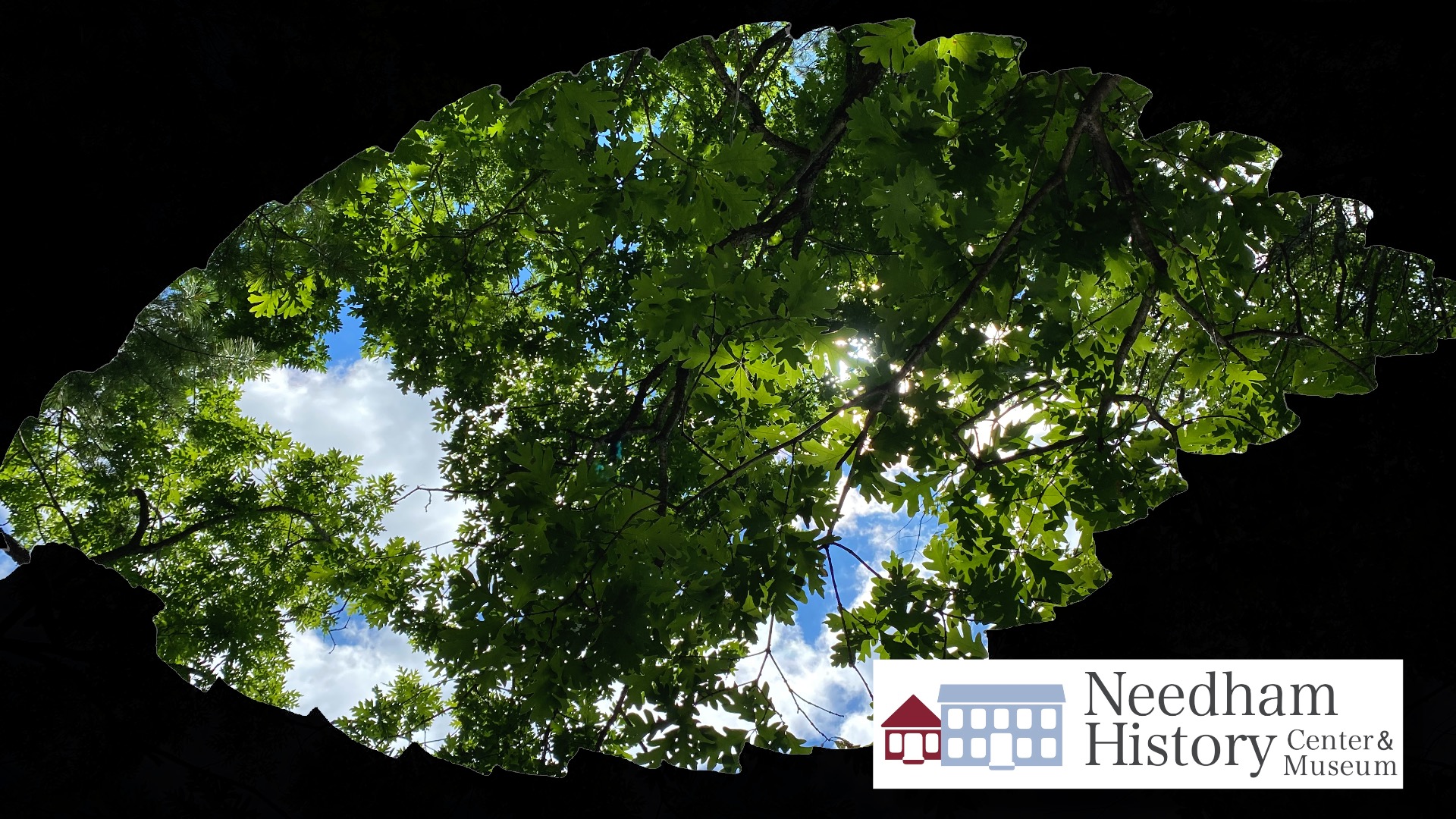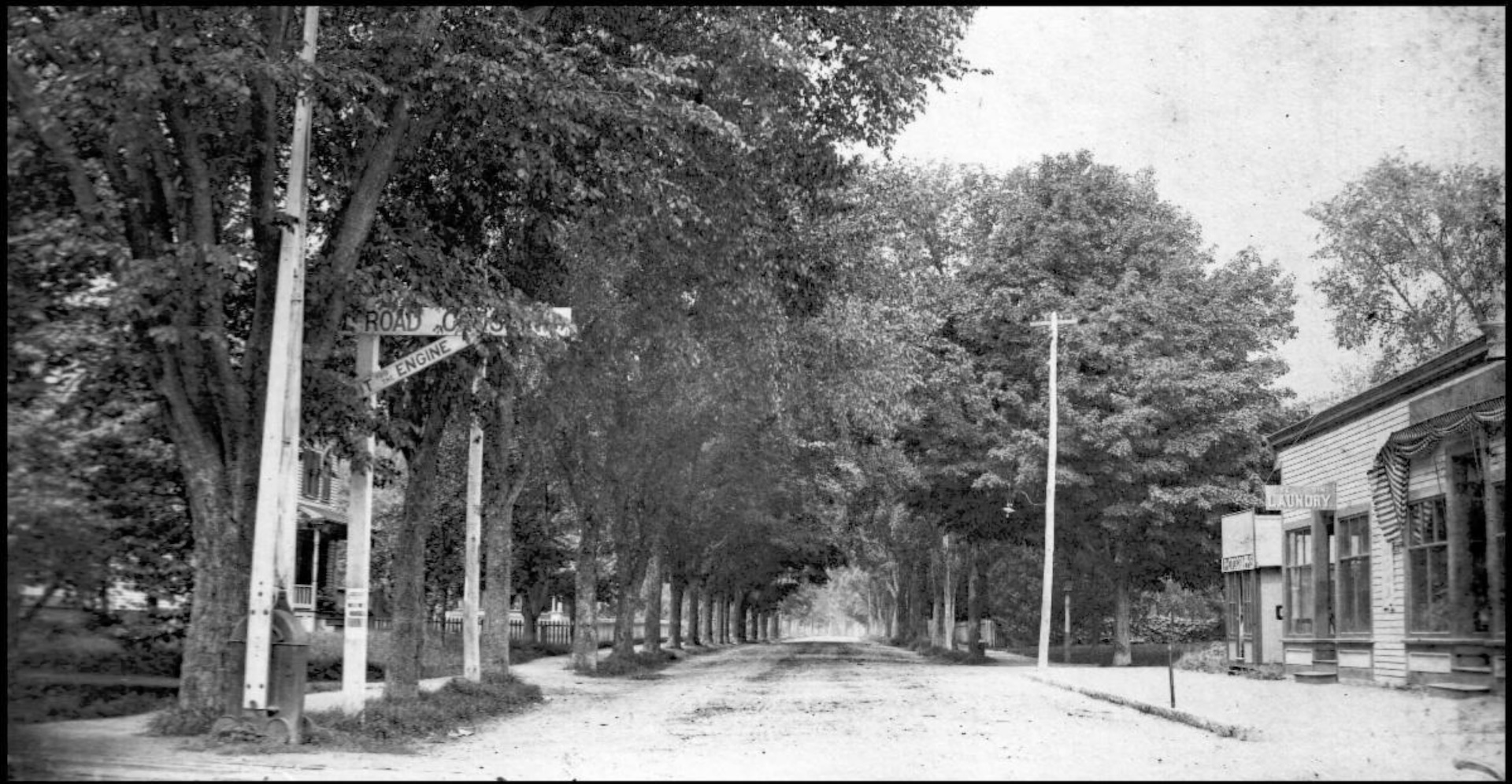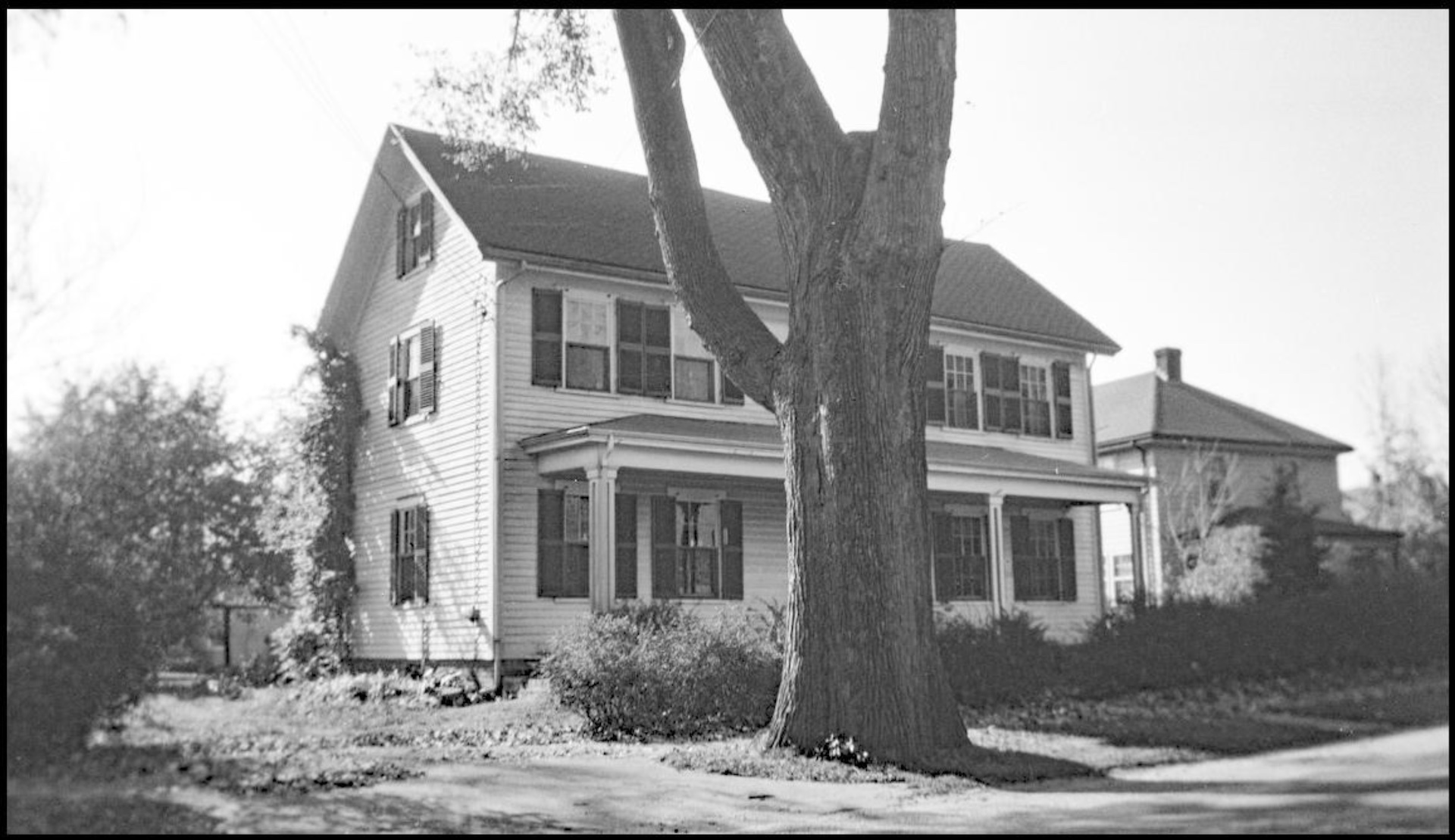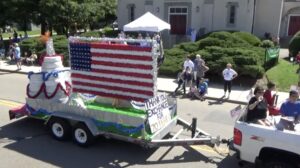
Needham History: Shading the New Republic
Summer is drawn blinds in Louisiana, long winds in Wyoming,
shade of elms and maples in New England.
— Archibald MacLeish, American poet (1892-1982)
 The archway of elms along Great Plain Avenue, looking west from the railroad crossing, circa 1895. The buildings on the right – a druggist’s, a Chinese laundry, and a photographer’s studio – are between the tracks and Garden Street, on the Needham Bank’s current location.
The archway of elms along Great Plain Avenue, looking west from the railroad crossing, circa 1895. The buildings on the right – a druggist’s, a Chinese laundry, and a photographer’s studio – are between the tracks and Garden Street, on the Needham Bank’s current location.
Shading the New Republic
You might have noticed that trees in the downtown have been coming and going in the past couple of years. We all know that the old Blue Tree on the Common, a 100-year-old sugar maple, died and was replaced by a younger version of itself (be patient – it will grow!). But the smaller street trees are also being replaced. The ornamental Bradford Pears that lined Great Plain Avenue in the downtown are systematically being replaced with trees better suited to sharing the sidewalk with pedestrians, business signage, municipal snow plows, and the other needs of modern streetscapes. The Bradfords were not doing well – they are fragile, and (in my personal opinion, at least) not really all that ornamental.
The archetypal street tree is of course, the American Elm. Old elms are now rare, having been decimated by Dutch elm disease in the mid-1900s. But prior to the 1930s, elms were the most common street tree in the United States, with nearly 100 million of them planted along the business districts and residential lanes and Elm Streets all across America.
The planting of elms along New England streets began in the early 1800s. Although they are beautiful, the motivation was not primarily aesthetic. Even in New England, summers are hot. And in the 19th century people wore many layers of clothes – a suit made of poplin was still a suit, and summer dresses required extra layers of petticoats to soak up the perspiration. Street trees provided necessary shade along the sidewalks and roads for both pedestrians and the horses that pulled carriages and carts. Elms were not good for much else, but they were ideal for this purpose, because they were tolerant of a variety of growing conditions, and grew fast and straight with a high spreading canopy. Once mature, they formed a shady arch over the street.
As America moved west, the elms went with them. In part to shade the street during even hotter western summers, and in part because a shady elm-lined street evoked the image of the established and prosperous towns back east.
Needham once had its own lush canopy of elms, a Gothic archway over its main thoroughfare. The elms were planted along both sides of Great Plain Avenue, from Pickering Street to Marked Tree Road, in 1848. The trees were planted by Edgar Whitaker and his sons, to celebrate (it is said) the opening of the Cochituate Aqueduct. Whitaker lived on Great Plain Avenue, in the house that later became the Kingsbury-Whitaker House (and former home of the Needham History Center) on Glendoon Road.
For more than 50 years the elms shaded Great Plain Avenue, standing tall as the downtown shifted over from Nehoiden Street in the 1850s, and began to thrive in its new location. Unfortunately, that progress was the beginning of the elms’ demise. In 1902, when the Town Hall was built on the Common, widening and improvements to the section of street in front of it necessitated the removal of many of the trees between Highland Avenue and Chapel Street. Then, a massive ice storm in November 1921 caused widespread damage to the trees in town, the elms among them. In 1925, the trees were cut back to facilitate further road widening between Great Plain Avenue and Pickering Street; but because of actual malice (to make removal inevitable) or blinding incompetence, the trees were cut back so severely that many could not survive and had to be removed. The Hurricane of 1938 caused further damage to the remaining trees, effectively removing the last of the shady green archway. The few survivors succumbed to later road widenings, residential construction, and Dutch elm disease.
As the elms died out, Norway maples became the new street tree of choice, for many of the same reasons. Norways grow fast and tall, and they are tolerant of the less-than-ideal roadside conditions. Unfortunately, they are also fragile and shallow-rooted, making them prone to dropping branches into the road, or dropping altogether in a storm. The taller trees are also a risk to the power lines, and many have to be cut back every fall.
I’ve noticed that the most recent street trees around my neighborhood are ornamentals – flowering crabapples and maybe cherries, that are both attractive and short enough to stay clear of the power lines. This has my entire approval (not that they asked me…) We now go lightly-dressed in the summer, on the rare occasions when we leave our air-conditioned cars. Shade is no longer a necessity, but we can still enjoy some beauty along our streets.
An ancient elm in front of the James Smith House (built 1727) on Great Plain Avenue. The tree was one of a pair that were planted around the time of the Revolutionary War by Capt. Robert Smith. The picture was taken around 1950. Both trees have since died and were taken down.
 |
Gloria Polizzotti Greis is the Executive Director of the Needham History Center & Museum. For more information, please see their website at www.needhamhistory.org. |

